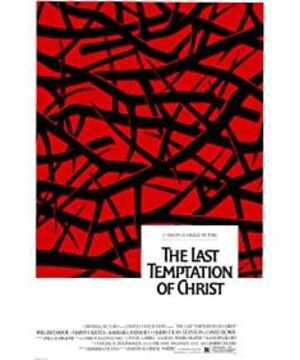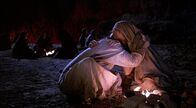=========================================== =============================
Link >>>> Christian manuscripts 1700 years ago confirmed that Judas was a hero.
Time: 2006-04-07 GMT Keywords: Judas Gospel Manuscript Judas
[Sing Tao Net News] The National Geographic Society held a press conference at its headquarters in Washington on the morning of the 6th, Eastern Time, and officially published a manuscript of the "Gospel of Judas" lost for nearly 1,700 years. The English translation of its content is made public. For months, the National Geographic Society has kept secrets about this "Gospel of Judas", which may be related to the fact that this gospel was written in the name of Judas who betrayed Jesus, and the content is quite controversial.
The "Gospel of Judas" puts forward a completely different view of the relationship between Jesus and his disciple Judas from the traditional Christian religion for two thousand years, and has a new portrayal of this disciple who betrayed Jesus. For a long time, the Christian world has always regarded Judas as a traitor, but the "Gospel of Judas" has subverted this view, saying that Judas is actually Jesus' favorite disciple. The reason why he betrayed Jesus was inspired by Jesus in order to fulfill God. Plan of salvation. It is completely contrary to the descriptions of the four gospels in the New Testament (Gospel of Matthew, Gospel of Mark, Gospel of Luke and Gospel of John).
Reproduced from Greek manuscripts in the third and fourth centuries
In addition to the "Gospel of Judah", this 66-page ancient manuscript, written in ancient Egyptian Coptic script, also has a manuscript titled "Jacob Bububu" (also known as "Jacob Bububu"). Bubu Bubu Revelation), "The Letter from Peter to Philip" and a fragment that scholars temporarily call "Arokinai". The manuscript dates back to the third or fourth century AD, and this manuscript may have been copied from a Greek manuscript around 150 AD.
The manuscript of the "Gospel of Judah" was jointly preserved, authenticated and translated by the National Geographic Society, the Maecenas Foundation for AncientArt and the Waitt Institute for Historical Discovery. As for this papyrus (a writing medium widely used by the ancient Egyptians, made from the stems of papyrus that was abundant in the Nile Delta at the time), the manuscript restoration and reorganization will be premiered on the "National Geographic Channel" on April 9th. Degree public.
The "Gospel of Judas" was discovered in Egypt around 1980, when it was only a fragment of a pile of papyrus. In 1983, these manuscripts appeared on the international antiquities market, when a group of scholars had seen this manuscript. As the seller asked for three million US dollars, no one could afford it. The manuscript lay in the safe of Citibank, Long Island, New York for nearly two decades. Acquired by the Art Foundation.
Five methods of identification proved to be a "Pond scripture" work. The
National Geographic Society claimed that this ancient manuscript is a genuine Christian "Pond scripture" work. There are five methods of identification: radiocarbon dating, ink analysis, multispectral photography, internal Comparison of text and ancient characters.
Terry Garcia, Executive Vice President of Programs at the National Geographic Society, said: “This dramatic unearthed ancient document of non-biblical texts is recognized as the most significant discovery in the past sixty years. It promotes our understanding of the early Christian period. The understanding of historical and theological perspectives is very worthy of continued research by historians, scholars and theologians."
Although the National Geographic Society and other institutions keep the "Gospel of Judah" related research work extremely confidential. "Time" magazine reported this highly controversial major archaeological discovery in February this year.
Overseas media have recently quoted some biblical scholars as saying that they do not think that the "Gospel of Judas" can give people a deeper understanding of Jesus or Judas, nor can it shake the entrenched Christian tradition for two thousand years, but it can let everyone see Some chaos existed in the early development of Christianity.
Scholars point out that the "Gospel of Judah" is a "Gnostic" work. Gnosticism prevailed in the second and third centuries AD. Although supporters under the banner of Christianity believed that salvation could be obtained through "gnosis" or "knowledge." According to their views, the Gnostics have published many works in the name of the gospel, including the Gospel of Thomas, the Gospel of Philip, the Gospel of Mary, the Gospel of Egypt, and the Gospel of Truth. (Image source: National Geographic)
========================================= =================================
This discovery is really awesome! Although Gnosticism has always been known as "a doomsday forecaster who has repeatedly reported wrongs", I still decided to fan them once. I also want to worship the original author of "Last Temptation of Christ" (Last Temptation of Christ), the Greek Nicos Kazantzakis (Νικος Καζαντζακις, Nikos Kazantzakis), and the box office spectacle and disaster Martin · Martin Scorsese. In front of the stalwart group portrait of the winner of this gamble, Robert De Niro, who withdrew from the film crew under pressure from the religious world, was alive and well.
Under the influence of this news, I opened the famous folder "Archaeological Materials" on Disk D and clicked on "The Last Temptation of Christ". It must be stated that I only vaguely knew beforehand that this film was a controversial work that reversed Judas' case and "restored Jesus from a human perspective." Such a qualitative character, based on my appraisal after watching the film, has basically been said to be complete. However, the latest papyrus archaeological discoveries have given this full-length yellow sand-covered struggle drama with brand-new connotations: fables of human nature, power struggles within sects, entanglements of beliefs... The true archaeological discoveries make this original "pure fiction." "The fable became less ridiculous, so both its power and internal drama took a leap.
————————————————————————————————————
Story summary can be seen in any search engine. In the film "Chi", Jesus was a cross-maker. He often fell into auditory hallucinations and was tortured by this kind of enlightenment. According to the habit of fashionable postmodern movies, Jesus can be treated as a hysterical schizophrenic like Luc Besson's Joan of Arc. However, as a film adapted from a novel published in 1973, In this film, Jesus still retains the identity of the "prophet" in the classic sense: He can hear divine revelations (of course the evidence is not sufficient, it may be the voice of Satan), accept divine revelations, and perform miracles. Comparing these two treatments, I can feel that the post-modern reduction method of completely dispelling "God" is a failure. This failure can be used to summarize "Joan of Arc" and even explain all Hollywood epics in recent years. Films (such as "Troy" and "Trojan Horse Slaughter"). In the Western spiritual world, once the struggle of human nature is completely separated from the other side and transcendence, it will have no roots anywhere, and will eventually have to fall into the quagmire of barbarism, greed and even animality. It is ridiculous that Hollywood has to pretend to package this muddy spirit as "real humanity." Where is the most violent conflict in human nature? In fact, it is not "man" and "beast", but "man" and "god", although the former is becoming more and more mainstream today. "Ki" also took the post-modern path, but it was not thorough, at least it also inherited the existence of transcendental belief. This kind of processing gave the plot conflict a multi-layered texture.
Still get back to business. Student Jesus, a weak young man who is suspected of schizophrenia, loves Maria Magdalene deeply. According to the Bible, she is the prostitute who has to pick up guests even on the Sabbath. In front of this woman, Jesus gave a famous speech "If any of you has never been guilty, then please throw a stone in your hand." Also in front of this woman, Jesus suppressed lust and refused her seduction—according to his future dialogue with the seeker in the desert, he felt sacred and cheerful at the moment of rejection. This example shows the constant and chaotic entanglement between soul lovers and earthly happiness: rejecting earthly happiness in the name of God, but saving earthly happiness in the name of God. This kind of entanglement was used by Satan. After Jesus was nailed to the cross, he turned into an angel to lure him to the execution ground, and lured him into marrying a wife and having children, living an ordinary life, and enjoying the happiness of the world. Throughout the film, Jesus behaves like a bewildered mortal who has been hijacked by God’s will. In the bridge section where he saves Lazarus, when the dead Lazarus in the gloomy tomb stretches out, he is rotten and mottled. When he put his hand, Jesus’ face was filled with hesitation and fear. He kept asking God to talk to him face to face, but only temptation, mundane happiness, and Satan came to visit him. The arduous mission of "the scapegoat of mankind's original sin" made him unbearable and painful.
Judas is the most important figure in the play next to Jesus, and here he becomes a standard patriotic revolutionary youth. Since Jesus was a cross-maker working for the Roman local government at first, Judas was ordered to assassinate him by the anti-Roman organization in Jerusalem, but Jesus' unusual neurotic behavior made him repeatedly unable to do so. As Jesus became more and more apparent in his prophetic qualities, Judas became his faithful disciple—as shown in the newly discovered ancient scrolls of the "Gospel of Judas." Judas is calm, firm, and has an outstanding sense of mission. When Jesus knew that his destiny was to be crucified, he was extremely painful. He asked Judas to betray himself to the Roman authorities to help him achieve physical transcendence and achieve God's redemptive will. The strong Judas therefore betrayed his teacher. However, the weak Jesus was deceived by Satan and escaped from the cross. Years later, when Jesus was dying and dying, Judas came to him and denounced his weakness and lack of faith. In the flames of the massacre, Jesus suddenly awakened and decided to go back to fulfill his mission-to be his scapegoat and redeem for the world. Once this decision was made, the plot immediately retreated to the moment he was nailed to the cross. Satan's temptation and Jesus' worldly happiness became only an illusion.
——————————————————————————————————
Jesus has appointed Judas to betray him. There have been countless guesses since ancient times. From a logical inference, as the son of the omniscient and omnipotent God, Jesus should know his fate of being betrayed and crucified, and whether he was betrayed passively or actively asked Judas to betrayed, it would not detract from the greatness of his redemption of the world. The writer also expresses the love of God and Jesus to the world in particular. The orthodox doctrine dismissed all of these as heretics, which is probably the result of a power conspiracy just like the Confucian struggle within Confucianism after the death of Confucius: the other disciples who were jealous of Judas vigorously vilified him in the scriptures. In "Ji", the author who adopts the heretical doctrine has erected Judas as a tragic hero, and Jesus is just a weak person who can know the enlightenment and guide miracles. This is the greatest degree of subversion within the author's ability. This subversion is based on the estimation that the preacher may be weak as a "person". This estimate refers to the discovery of the ancient scrolls of the "Gospel of Judas", which is particularly interesting. On the one hand, it shows the surging undercurrents of the internal power structure of Christianity as a school of thought. In the age of empirical belief, the real mechanism and situation of the conflict between human nature and divine nature.
The part of the film that reflects the Gnostic heresy doctrine is now over, and the author's more focused plot is obviously the part of the illusion that Jesus was tempted by Satan after he went to the cross. According to Martin Scorsese's understanding, this part of the plot illustrates that "sin" is in many cases "ordinary", that is, the erosion of ordinary life to the sacred pursuit. Satan never tempted Jesus to do evil, but just to marry a wife and have children and lead a good ordinary life. I believe that today's audiences, especially Chinese audiences who have no real soul concepts and beliefs, will not be too touched by such opinions-we don't really believe in a world that is completely beyond the scope of our own experience, let alone there is It is necessary to give everything to this world, and this thing is precisely what is called faith. Living a good ordinary life is the deepest belief of this age. Any kind of pursuit of sublime effort may seem weird or even ridiculous. The kind of conflict in Jesus is inevitably unreasonable today. We have also found it difficult to understand the extreme enthusiasm of those revolutionaries and puritans in the war years. Such a "disenchanted" understanding of the world is essentially empirical. It removes a lot of risks and pain, but it also removes a lot of fun and life possibilities.
Regarding the conflict between the sacred cause and the secular cause, the film also shows some expressions, but the core of the main reference is Dostoevsky in addition to the doctrine of Christianity itself. For example, the revolutionaries wanted to overthrow the rule of Rome over the Jews, hoping to resort to violence, but Jesus advocated "love", which was later extended to "God belongs to God, and Caesar belongs to Caesar". This bridge is purely from the "Bible". In the second half, Jesus, who was tempted by an angel played by Satan, walked through the market and heard Saul (the evangelist St. Paul) preach the story of the crucifixion and resurrection of Jesus. He angrily accused it of deceit. St. Paul said that no one will believe your words. People need the Jesus I said instead of you. The Jesus I am talking about is much more powerful than you, the real Jesus. Dostoyevsky wrote a story about "The Religious Judge" in the novel "Brothers Karamazov". In the 16th century, God returned to the world in the image of Jesus, and people spontaneously followed him. Therefore, the religious judge wanted to put God to death. He questioned: "What are you doing here? Why are you obstructing our career? The "freedom" you promised has finally been realized through our efforts. They are now entrusting freedom to us. Isn't this what you hoped for? Is it'freedom'?" The sacred cause here shows a paradox: the "love" and "freedom" that God calls are completely different in the operation of the dunya. In fact, all noble undertakings are faced with such a similar paradox. In any case, inserting such a bridge makes the theme of the film more branchy. I saw a Jesus who knew his own destiny but did not dare to accept it, and a Judas who did not know his own destiny but believed in such a mission, but whether it was Jesus or Judas, they were struggling with "man" and "god." In dispute. After all, the original author, adaptor and Martin Scorsese could not convince the Chinese to point out why ordinary life’s erosion of "sacred cause" must be a terribly bad thing. On the contrary, "sacred" and "sacred" in the plot The endless entanglement of "worldly" in the dojo of human nature is enough to make us more firmly believe that the "belief" in transcendence is simply a burden of self-seeking troubles.
——————————————————————————————————————————
After Robert De Niro withdrew, Willem Dafoe replaced him. McGoo, the biggest villain in "Spider-Man 1" is also struggling and neurotic in "The Last Temptation of Christ". He has widened blue eyes and opened his twisted mouth all day long, which reminds me of many times. "Lawrence of Arabia" does not have the gentle and humble love of Jesus in the traditional concept. On the whole, this film is actually really not good-looking. In the eyes of Westerners, it is probably just like "Journey to the West" and "Evil Evil and West Poison", but it is just a joke. In my eyes, it is a bit more interesting than epic films in the future. The religious themes are loaded with b movies. In connection with the retreat of "Benxu" who dare not exceed the "Bible" Lei Chi, and the Puritan theme of Mel Gibson's "Passion", or the rebellious "Last Temptation of Christ", I am more appetizing.
——————————————————————————————————
Original: http://blog.sina.com.cn/s /blog_6cd6c0510100m0n0.html
View more about The Last Temptation of Christ reviews











